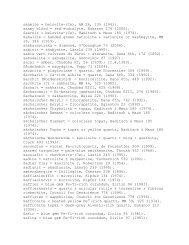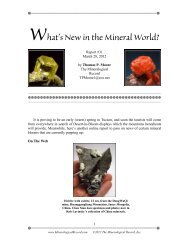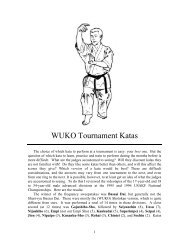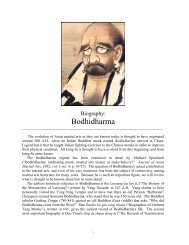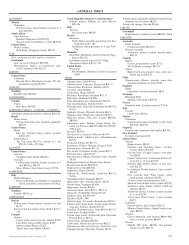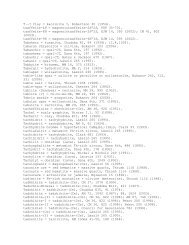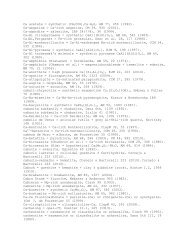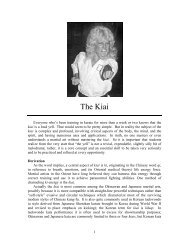Cuprian Elbaite - The Mineralogical Record
Cuprian Elbaite - The Mineralogical Record
Cuprian Elbaite - The Mineralogical Record
You also want an ePaper? Increase the reach of your titles
YUMPU automatically turns print PDFs into web optimized ePapers that Google loves.
130<br />
Figure 4. <strong>The</strong> Batalha mine workings on Frade<br />
Hill. Brendan Laurs photo.<br />
developed; the operation has been very successful. Removal and<br />
processing of alluvial/eluvial material has also uncovered additional<br />
tourmaline-bearing pegmatite veins (Austin, 2001). <strong>The</strong><br />
Batalha mine is a labyrinth consisting of shafts 50 to 60 meters in<br />
depth connected by several kilometers of hand-dug drifts and adits<br />
exploiting the complex system of pegmatite dikes. <strong>The</strong> narrow<br />
tunnels (originally only about 60 x 180 cm, though some have now<br />
been significantly enlarged to around 2 meters high and 1.5 meters<br />
across) were all worked solely by candlelight, under conditions of<br />
poor ventilation, during the 1980’s and early 1990’s, but have been<br />
modernized somewhat in recent years.<br />
It was estimated in 1990 that approximately 10,000 carats (2 kg)<br />
of rough crystals and cut stones had been produced from the mine<br />
before legal difficulties restricted mining activity. Additional pockets<br />
were discovered underground in 1993 and 1998, but since then<br />
the bulk of production of gem rough has come from the processing<br />
of alluvial material (Austin, 2001).<br />
GEOLOGY<br />
<strong>The</strong> Batalha occurrence is situated within a large, well-known<br />
pegmatite province containing hundreds of pegmatite bodies that<br />
have produced feldspar, quartz, mica and columbite-tantalite. At<br />
Batalha the geology consists of a parallel to sub-parallel system of<br />
steeply dipping, thoroughly decomposed granitic pegmatite dikes<br />
cutting across a hard muscovite-quartzite country rock. This rock<br />
unit, known as the Ecuador Formation of the Mid-Proterozoic<br />
Serido Group, is part of the Borborema geologic province (Almeida<br />
et al., 1981). <strong>The</strong> dikes are thought to have formed during the<br />
Upper Proterozoic (650–600 ma) Braziliano thermotectonic cycle.<br />
Feldspars in the pegmatites have all been completely altered to<br />
white, chalky kaolinite. Gem-quality tourmaline crystals are found<br />
embedded in this clay, and within small clay-filled pockets in the<br />
core zones of the pegmatites. Most tourmaline crystals have been<br />
broken by natural tectonic forces, and show moderate to severe<br />
etching. Some crystals have also been partially or completely<br />
altered to lepidolite. Associated minerals include quartz, lepidolite,<br />
schorl, dark green non-cuprian elbaite and Nb-Ta oxides.<br />
Figure 5. Old workings at the Batalha mine<br />
from which much cuprian elbaite was taken.<br />
Brendan Laurs photo.<br />
<strong>The</strong> <strong>Mineralogical</strong> <strong>Record</strong>, volume 33, March–April, 2002



